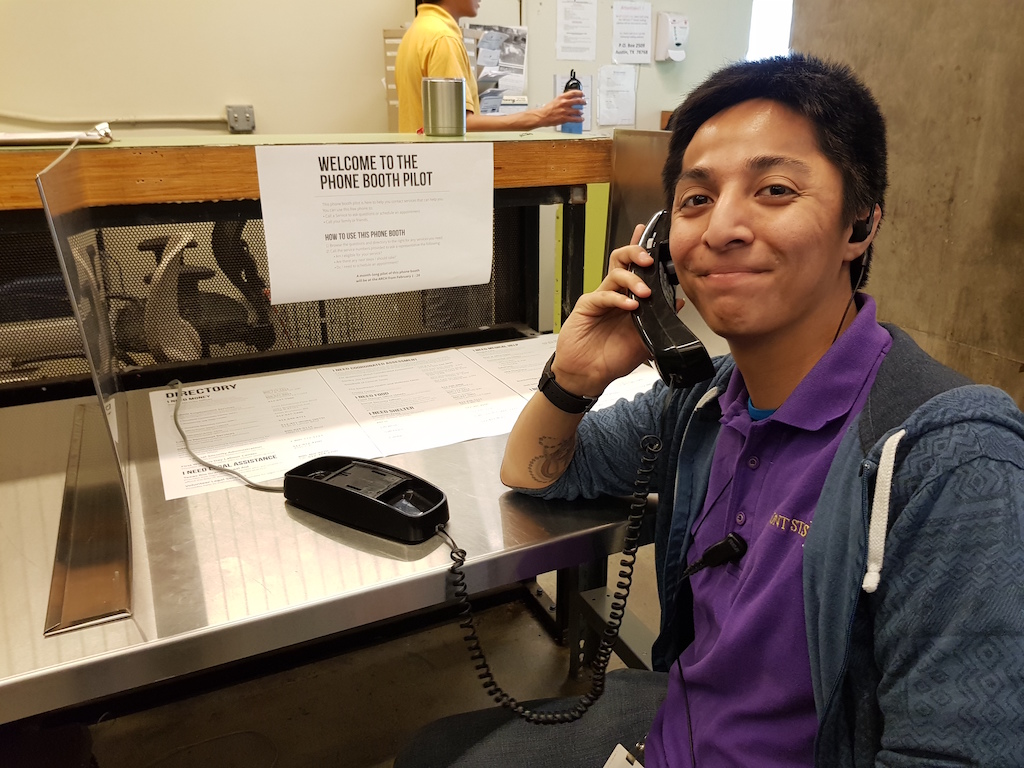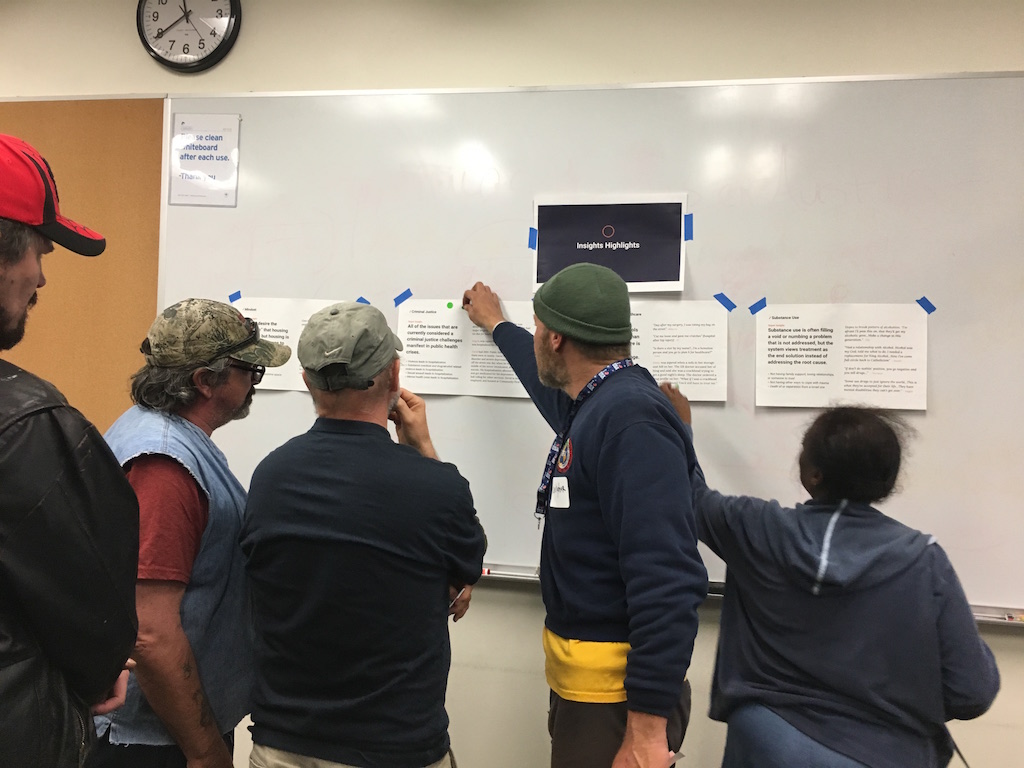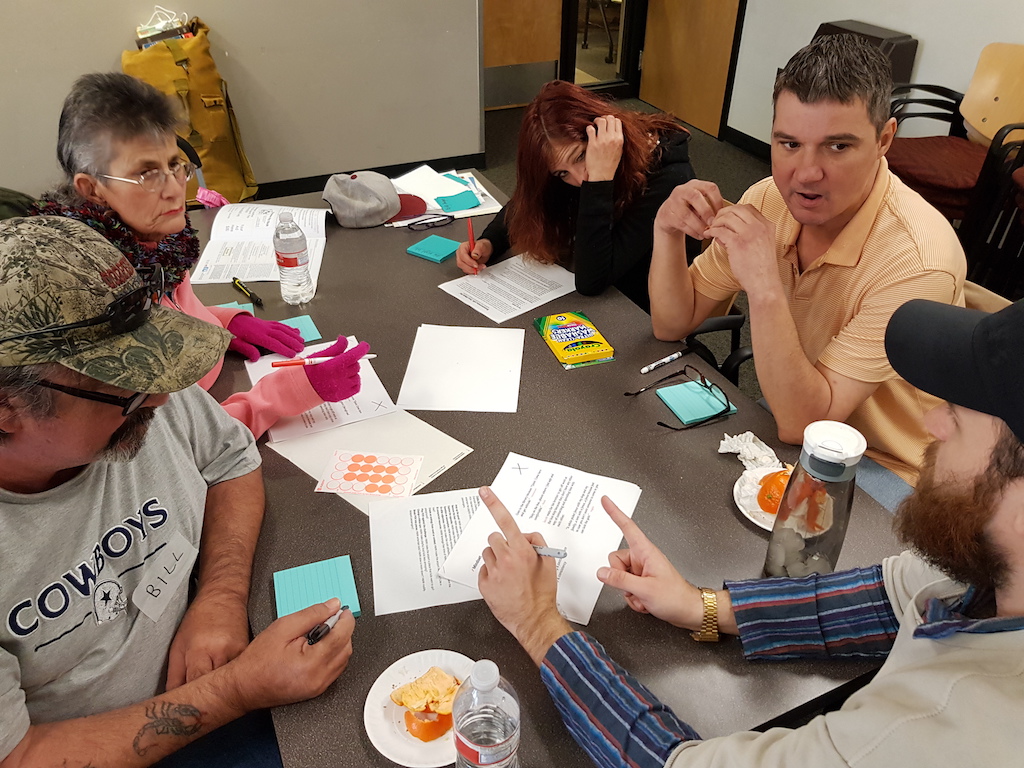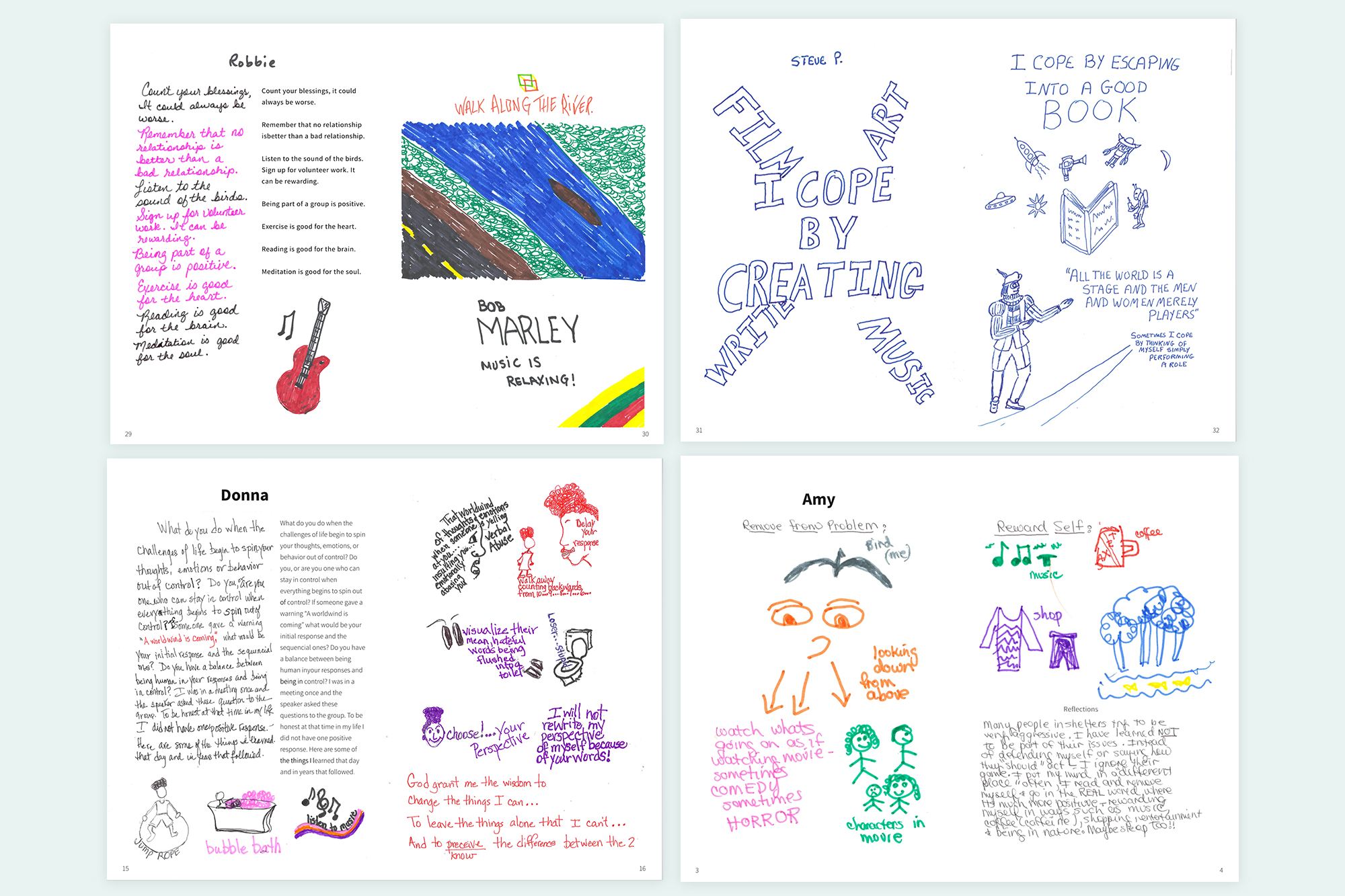Lived experience advisory for Homelessness
Austin Homelessness Advisory Committee
By Titania Veda, The City of Austin Innovation Team
2017–present
Project
The Austin Homelessness Advisory Committee (“Advisory Committee” for short) is Austin’s first lived experience advisory group for the homeless. It was created to help with the development of research tools, to provide a way to consult with committee members on findings, and to test out possible solutions around the issue of homelessness.
- The Advisory Committee started with a 6-month pilot. The group included 13 members who were or are currently experiencing homelessness. By March 2018, the Advisory Committee had grown to 16 members with a 90% attendance rate for each meeting. The pilot was extended to 18 months.
Background
- In July 2017, Bloomberg Philanthropies granted the City of Austin $1,250,000 over three years. This enabled the City of Austin to address the Mayor and Council’s priority to improve coordination across the city to combat homelessness.
- The project was started to understand how service providers, community health paramedics, and police could work together on this issue.
- The Innovation Team worked with Austin’s City Council, city agencies, emergency services, and community stakeholders on this project. They soon realized that voices from people with lived experience of homelessness were missing. As a result the Office of Innovation decided to form a lived experience advisory group for people experiencing homelessness.
Partners
- The pilot project was formed through a partnership between the City of Austin’s Innovation Team (iTeam), the Department of Public Health, and the Ending Community Homelessness Coalition (ECHO).
- The Bloomberg program provided funding to the in-house Innovation Team to pioneer new approaches on homelessness, including the advisory group.
- A number of city agencies who turned to the group for input, such as the City Auditor, The Office of Police Oversight, and the navigators from the local homeless shelters.
Desired outcome
- To provide a voice for people with lived experience of homelessness.
- To provide opportunities to people with lived experience of homelessness to contribute to policymaking, give feedback on services and resources, and assist in the design of materials and outreach for the homeless.
- To enable the City of Austin to create better informed and more successful services for the homeless.
Co-design overview
Goal
The goal of the Advisory Committee was to:
- Educate and inform policy makers on the lived experiences of homelessness (including disability, mental health, substance use disorder, and more).
- Get feedback on current services and resources aimed at people experiencing homelessness.
- Use lived experience to guide the improvement of services.
- Inform the design of materials and outreach for people experiencing homelessness.
Who was there
- Members of the Innovation Team facilitated the Advisory Committee sessions.
- The Advisory Committee was made up of participants who had in the past or were currently experiencing homelessness. To be eligible for the Advisory Committee, the participants we required to:
- have in the past or be currently experiencing homelessness,
- be living in the City of Austin,
- be able to attend the bimonthly meetings,
- be sober during the meetings,
- be willing to take part actively and provide feedback.
Co-design process
Recruitment

Members of the Innovation Team interviewing people experiencing homelessness during a pop up with HOST (Homeless Outreach Street Team) at a local school gym.

Tony Nunez, the Front Steps navigator at ARCH testing our phone booth pilot.
To develop an in-field recruitment method, the Innovation Team worked with city stakeholders, emergency services, police, and city agencies that were in constant contact with people experiencing homelessness. Recruitment of the Advisory Committee was done via:
- an online form,
- the phone,
- pop-ups around the city that were regularly held by the Homelessness Outreach Street Team in places where the homeless tend to gather.
Planning
- The team planned the Advisory Committee’s onboarding program, agendas for the biweekly sessions, and a communications plan. This included a “getting to know you” session where participants shared their proudest accomplishments.
- Laura Evanoff from our partner, Ending Community Homelessness Coalition, made sure the meetings remained focused on the participants. She also provided them with grounding and coping techniques to support their mental and emotional health.
- As the sessions started, they were adapted to the needs and skills level of the Advisory Committee and external stakeholders (service providers and city officials who were seeking feedback on their programs).
Facilitation

Members of the Advisory Committee working on synthesizing ideas with the Innovation Team.

Lincoln Neiger, lead service designer, facilitating an ideation workshop with members of the Advisory Committee.
- During the first session, everyone co-designed the group’s by-laws together. By-laws are an agreement on how the members were going to engage with each other and the Innovation Team. It was important that the by-laws were created together with the Advisory Committee to create a sense of ownership from everyone.
- The Innovation Team co-designed a life skills learning program with the Advisory Committee to ensure the sessions were co-created while providing additional support for the members. They also received support from a social worker trained in group therapy.
Ideas and outcomes
- The sessions ranged from panhandling role play to providing healthcare feedback on a mobile shelter clinic.
- As a result of the life skills learning program, the group created a Coping Skills booklet about skills they used to survive life on the streets. The booklet is now available in every library in Austin for people experiencing homelessness to access.

A sample of pages from the Coping Skills booklet.
The Advisory Committee members also brought their own ideas to test. Two members, a couple named Bill and Judi, created a plan to deliver travel-sized toiletries to people on the streets and distribute them at a local church on Sundays. The facilitators provided the funding and support to prototype a rolling suitcase packed with mini shampoos, soaps, deodorants. The test brought to light two issues that people who have never been homeless might not know:
- Large bottles of toiletries are tricky for someone to carry around and prone to leaking.
- Many people experiencing homelessness feel safer in churches and libraries than they do at local shelters.
Challenges and Learnings
Integrating members
Integrating the members and creating a safe space for everyone was tricky at the beginning. Tensions were high from living on the streets and struggling with mental illness, and arguments would arise. All members also brought personal grievances about a system they felt had failed them. It took about 5 - 6 months for the group to form a strong connection with each other.
Learning: Encourage empathy and story sharing
A big group of people who do not know each other can be scary. A way to get to know each other is to get the members to work in small groups. This makes it easier for individuals to open up. Make sure to bring in different methods, activities, and prompts to provide structure and increase group bonding. Activities such as picture drawing or writing can help participants be more comfortable in sharing their experiences and offering their advice and insights. It’s also important to maintain a balance of listening to participants’ concerns while providing compassionate redirection to keep the group focused on tasks and topics.
Providing emotional and mental support
By creating a safer space for members to voice their opinions, they opened up more when they felt emotionally and mentally cared for. However, facilitators were not equipped to give the professional mental and emotional support or have the case management expertise to assist people living in crisis. This issue was solved in part when the Advisory Committee’s oversight moved over to the Austin Downtown Community Court (DACC), which was able to provide more support.
Learning: Start with small, feasible solutions
Training facilitators in trauma informed care practices so that agendas and activities are sensitive to possible re-traumatization can take time. Start with activities that participants can do themselves, such as mindful awareness and breathing, to support themselves and build self resilience. Bring in a expert who can provide mental and emotional support during workshops. Another option is to train your team to develop these skills.
Impact
Through this pilot, we were able to:
- Gather essential feedback: Members offered feedback on the Innovation Team’s research and prototypes, which led to more relevant and usable solutions for government services to eventually implement.
- Create new solutions: Members were able to foster their own ideas and solutions, which started viable projects moving forward and encouraged their sense of agency.
- Build new skills for advocacy: Our skills building program taught members coping skills and public speaking skills. When members are seen, heard, and given the opportunities to use their skills, they can become powerful advocates for their community. This ultimately results in better designed services and for members to become more visible to service providers.
- Enable new friendships and bonds: The Advisory Committee created a group that was a safe space for sharing concerns and ideas with each other, which led to a community that also supported each other.
Every city should do something like this, and maybe even do it bigger than what Austin is doing. It’s important to work directly with the homeless, and hear our stories, rather than just try to figure out what we may need. Without this committee, Austin really wouldn’t know the diversity that’s there in the homeless situation, and how huge the need really is to come up with solutions that help people.
Donna Ware, who lost her home due to a legal dispute, has been living out of her car and a storage unit, and one of the original members of the Advisory Committee